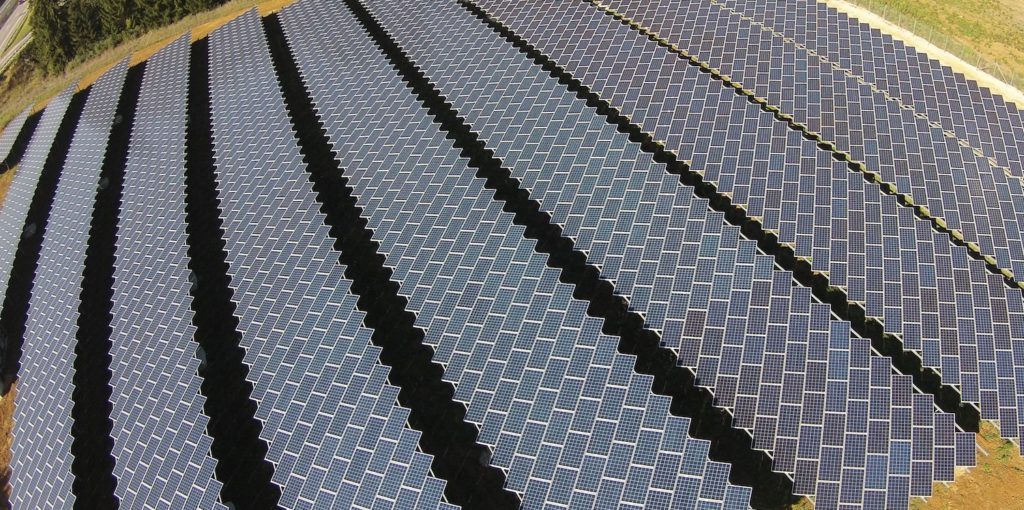From pv magazine Germany
The final average price in Germany’s tender for solar parks not exceeding 10 MW in size has fallen sharply in recent years. The lowest ever average price of €0.0433 cents per kWh was achieved in February 2018.
At the same time, the market value for solar electricity rose to unprecedented heights this summer. As a result, projects selected in tenders were able to work without any public incentive granted under Germany’s renewable energy law, EEG, for the first time during the month of August.
This occurred for a solar park built by Wattner, which was selected by the German government in a tender held in June 2017. The project was granted a tariff of €0.0542 per kWh, the company said at conference held by the German Renewable Energy Association (BEE) on Friday in Germany's capital, Berlin.
The plant, the construction of which was completed in almost a year, is selling power to the market with the support of Germany’s Next Kraftwerke. In August, the market value of solar power reached its highest level this year – €0.05595 cents per kWh. This was above the tariff granted in the tender, thus making the level of public subsidiy from the EEG drop to zero. This means the PV plant owner will be able to finance the investment solely through the proceeds from the sale of electricity.
In this context, the BEE speaks of a “historic turnaround”. “The integration of renewable energy into the market works. The EEG contributes to this achievement,” says CEO Peter Röttgen.
Marco Nicolosi of Connect Energy Economics points out that the bids for PV and wind power do not necessarily reflect the cost of electricity. “It's a competition for a minimum compensation,” he says. The operators of the plants can thereby protect themselves against falling market values and electricity prices. Overall, however, this mechanism strengthens the market integration of renewable energies.
Nicolosi further points out that the market value for solar in the months of July, August and September was, in each case, higher than the additional values granted by this year's tender. This means that these PV systems – if they are realized – will not burden the EEG account and will have financed themselves via the sale of electricity. However, the successful bidders have up to two years to realize their investments.
Popular content
The extent to which this development will continue depends on various factors. “We do not have a crystal ball, but I assume that this development will intensify in the future,” says Nicolosi. “Historically, we are now at the starting point.”
BEE Managing Director Röttgen also assumes that various factors can contribute to increasing market values even further. One element is the CO2 price. An increasing combination of renewable energies with storage technologies for a controlled feed-in premium tariff could also contribute to increasing market values. “In that sense, it is a necessary mechanism to advance innovation,” says Röttgen. “The law is designed so that the market premium automatically decreases as the market value of renewable energy increases and costs fall.”
Nicolosi expects that from the beginning of the 2020s, when the first EEG plants are shut down, nuclear power plants are deactivated and a potential carbon leakage occurs, the market values for PV and wind power plants will continue to increase.
With regard to the promised special tenders for PV and wind power – each of 2 GW in 2019 and 2020 – it is clear that the extra volumes could cause the additional values to rise again. Röttgen emphasizes that the industry not only wants additional tenders, but also wishes to maintain higher tender volumes.
He does not see the danger that the additional value will significantly increase again. “The renewable energy industry has done its homework in recent years to cut costs. It is now up to politicians to implement the expansion of renewables as agreed in the coalition agreement,” says Röttgen.
“At least now, the cost argument put forward for years by the opponents of the energy turnaround is invalidated,” said energy spokeswoman for Alliance 90/The Greens, Julia Verlinden, on the occasion of the publication. The EEG with the market premium is, therefore, the right instrument to give investment security to new renewable plants without at the same time driving up the EEG surcharge.
This content is protected by copyright and may not be reused. If you want to cooperate with us and would like to reuse some of our content, please contact: editors@pv-magazine.com.



2 comments
By submitting this form you agree to pv magazine using your data for the purposes of publishing your comment.
Your personal data will only be disclosed or otherwise transmitted to third parties for the purposes of spam filtering or if this is necessary for technical maintenance of the website. Any other transfer to third parties will not take place unless this is justified on the basis of applicable data protection regulations or if pv magazine is legally obliged to do so.
You may revoke this consent at any time with effect for the future, in which case your personal data will be deleted immediately. Otherwise, your data will be deleted if pv magazine has processed your request or the purpose of data storage is fulfilled.
Further information on data privacy can be found in our Data Protection Policy.